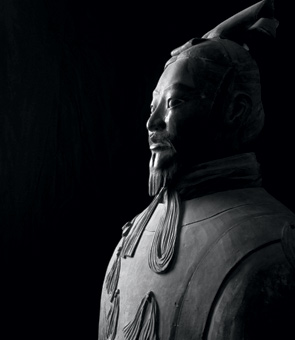
BURIED NO MORE: An armored general who stood guard for 2,000 years
Death did not suit Qin Shihuangdi, the man who unified China in 221 B.C. Obsessed with controlling time and the universe, he sought to retain authority in the after life by constructing a vast underground tomb complex modeled on his kingdom. For more than 2,000 years, an army of at least 7,000 terracotta soldiers guarded this buried empire. Its discovery in 1974, when a farmer stumbled across a clay head, led to one of the 20th century's most intriguing archaeological excavations.
Now, in "The First Emperor: China's Terracotta Army," the British Museum in London brings together the largest collection ever displayed abroad of artifacts from the Xi'an, China, site. Running until April 6, 2008, the exhibition showcases a dozen of the statues, along with weapons and cultural artifacts. Having survived three assassination attempts, the Emperor's top priority was security, so six-foot-plus (1.83 m) infantrymen, imperial guards and archers stand watch over his eternal realm. The afterlife also requires an administration, so there are civil officials and scribes, outfitted in their elegant robes and carrying writing implements. For entertainment, a strongman flexes his muscles and a sinuous acrobat balances on one leg.
For now, the Emperor's own burial place remains sealed: Chinese archaeologists have chosen to focus on excavating the statues. In that sense, the terracotta army has protected its Emperor after all.